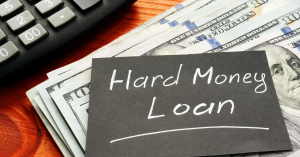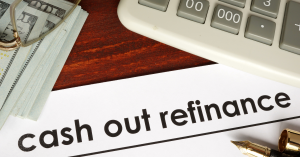Navigating the real estate landscape can feel like decoding a tricky cipher without the key. The myriad of options and considerations is vast, from interest rates to loan terms and down payments to home appraisals. One choice that leaves homeowners and buyers head-scratching is whether to purchase a mortgage or refinance their existing one.
While both are paths to homeownership, their implications, mechanics, and outcomes are as different as night and day. Understanding the difference between a purchase mortgage and a refinance is critical for aspiring and current homeowners. With years of experience in refinancing, I invite you as we embark on this enlightening journey through the thrilling crossroads of real estate financing, decoding the intrigue in the enigmatic duel of ‘purchase vs. refinance.’
How Does a Purchase Mortgage Work?
When you start the journey to homeownership, you need a mortgage to cover the property’s cost you wish to buy. Here are the steps involved in a purchase mortgage:
How Down Payment Comes into Play
The commencement of a purchase mortgage lies in the down payment. This is a fraction of the total property cost that the buyer pays out-of-pocket. Usually, down payments range from 5-20% of the property price. The importance of the down payment extends beyond being a starting point. It also significantly impacts the future course of repayments and interests.
The Determining Role of Credit Score
When obtaining a mortgage purchase, your credit score effectively dictates your eligibility. Lenders perceive a high credit score as an indicator of less risk, favoring such applicants with attractive offers like lower interest rates. Knowing what is a good credit score to refinance a home will help you address any inaccuracies or issues before applying for a loan.
Importance of Home Appraisal
A home appraisal in the context of a purchase mortgage is performed to determine the property’s current market value against the proposed buying price. This is crucial to avoid overpricing and under-financing, ensuring a fair deal for all parties involved.
Closing Costs – The Silent Component
Fees and expenses are part of the mortgage proceedings but are less upfront than the down payment or the monthly installments. While seemingly peripheral, their substantial aggregate makes them a factor worth considering while outlining the purchase mortgage plan.
Whether you’re a first-time buyer or want to upgrade, this loan option offers the required financial support to make your homeownership a reality. However, it’s essential to know how much it costs to finance your home mortgage because it impacts the overall cost of your loan.
How Does Refinancing Work?
Refinancing is a tool many homeowners use to replace their existing mortgage with a new loan, often to get better mortgage rates and terms. Here are a few reasons why many homeowners opt for refinancing:
- To secure better interest rates
- Summarize their debt
- Adjust their repayment term
- Lower monthly payments
Remember, through a cash-out refinancing loan; you can refinance with a lien on your home against the secured property, including existing loans and additional debt.
Refinancing Steps
Refinancing offers homeowners an opportunity to achieve their financial goals. Here are the steps involved in refinancing mortgage loans:
Step 1: Evaluating Your Current Mortgage
This is the first step in refinancing and involves examining your loan terms, remaining principal, and interest rate. Consider the many years left on your loan and any prepayment penalties attached to your loan.
Step 2: Determining Your Goals for Refinancing
During this step, you need to ask yourself a few questions. Are you looking to lower your monthly payments, shorten your loan term, or switch from an adjustable rate to a fixed-rate mortgage? Are you interested in tapping into your equity for a significant expense? Having clear objectives will guide you in finding the right refi loan.
Step 3: Shopping Around for Lenders
There are many lenders – from traditional banks to online companies. It pays to shop around and compare loan terms, interest rates, closing costs, and customer service before settling for a lender. A careful analysis can help you save considerably over the life of your mortgage.
Step 4: Applying for the New Mortgage
Once you’ve picked a lender that matches your needs, the next step is to apply for a new mortgage. You must gather all required documentation about your income, assets, and debts and fill out an application. This mortgage process is quite similar to the initial mortgage application process.
Step 5: The Appraisal and Underwriting Process
After applying, your chosen lender will arrange for an appraisal to estimate the current value of your home. The appraiser renders an impartial, unbiased estimate which the lender then uses to determine the loan amount they will lend. Following the appraisal, the loan goes through the underwriting process, where the lender verifies your financial history and assesses the viability of providing a loan.
Step 6: Closing the Refinance Loan
Upon approval from underwriting, you’re ready to close. You’ll sign multiple documents, along with arranging for the payment of closing costs. You will then receive a ‘Closing Disclosure’ outlining the exact terms of your loan.
Every homeowner should familiarize themselves with the average closing costs for a refinance before initiating the refinancing process, as these costs can impact the total savings from refinancing.
Step 7: Repayment
With closing done, you’ll start making payments on your new loan as per the terms set in your loan agreement. Ensuring timely repayment is vital for maintaining a good credit score and continued good relations with your lender.
Through these steps, you can transform your mortgage to better suit your circumstances by deciding to refinance. It’s a worthy option for anyone aiming to improve their mortgage landscape.
Guidelines for Picking the Best Lender for Refinance

Choosing the right lender for your purchase or refinance loan is vital. Considerations like lender’s flexibility, interest rates, loan terms, customer service, and upfront fees play into making this choice.
- Determine your Refinance Goals: Clear goals will guide you to the right lender who fits your objectives.
- Thoroughly Compare Loan Terms: Study each lender’s loan offerings, interest rates, and closing costs comprehensively before deciding.
- Consider Customer Service: Solid customer service with prompt feedback can smooth the refi process. Prioritize lenders renowned for their excellent service.
- Evaluate Past Experience: If you had a positive experience with your current lender, engaging them again for refinance might be beneficial.
- Seek Professional Advice: A trusted financial advisor or mortgage broker could provide valuable insights into picking a suitable refi lender.
Remember that choosing a lender is an extensively personal decision and should factor into your financial situation, goals, and comfort with the lender’s process and service.
Difference Between Purchase and Refinance Mortgage
Purchase and refinance mortgages are essential components of the home loan market. The table below shows vital distinctions between the two fundamental aspects of the mortgage industry:
| Purchase | Refinance | |
|---|---|---|
| What it is | A loan to finance the purchase of a new home | A new loan that replaces your current mortgage |
| When to use | When buying a house | When one wants to change the terms of the loan or tap into home equity |
| Timeframe | Generally, 15 – 30 years | Varies depending on the terms of the new loan |
| Impact of credit score | A high score can lead to better terms and low interest | A low score may mean higher interest rates or even loan disapproval |
| Key players | Buyer, lender, seller | Borrower, lender |
Understanding the difference between these two loan options is essential for homebuyers navigating the world of real estate. Always seek advice from experienced mortgage lenders to enable you to make the best loan decision that aligns with your unique requirements.
Deciding Between Purchasing and Refinancing

Selecting between purchasing a new home or refinancing an existing one is a decision that requires careful consideration. It’s undoubtedly a pivotal point for homeowners that could significantly influence their financial future.
Your financial situation is a guiding factor in determining whether to purchase or refinance. A mortgage purchase might be more suitable if you want to own your first home or upgrade to a bigger one. On the contrary, refinancing might better serve homeowners seeking to reduce their monthly payments, switch from an adjustable-rate to a fixed-rate mortgage or tap into their equity.
As an expert in this area, it’s essential to analyze your current financial standing, including your credit score, income level, savings, and future financial goals, to tailor-make a decision that suits you best.
Frequently Asked Questions About Purchase vs Refinance
What is the difference between a purchase and refinance?
The difference between a purchase and refinance lies in their purpose and process. A purchase mortgage is used to buy a new house when you can’t afford the full cost upfront, while refinancing is a way to replace your existing mortgage with a new one – this could be to get a better interest rate, shorter loan term, or to tap into home equity.
Is a refinance easier than a purchase?
Whether refinancing is easier than purchasing depends on your specific circumstances, but generally, the refinancing process might be slightly less complicated. This is mainly because you’re dealing with a property you already own and a financial state your lender is familiar with, as opposed to dealing with property sellers, moving costs, home inspections, and coverages that come with purchasing a new property.
Why are purchase and refinance rates different?
Purchase and refinance rates differ due to the varying levels of risk associated with each type of mortgage from a lender’s perspective. With a purchase loan, the lender has the final say in whether a home purchase goes through, making the loan slightly less risky. On the other hand, in a refinance loan, lenders can face high risks, especially if the borrower is cashing out home equity, leading to higher rates.






